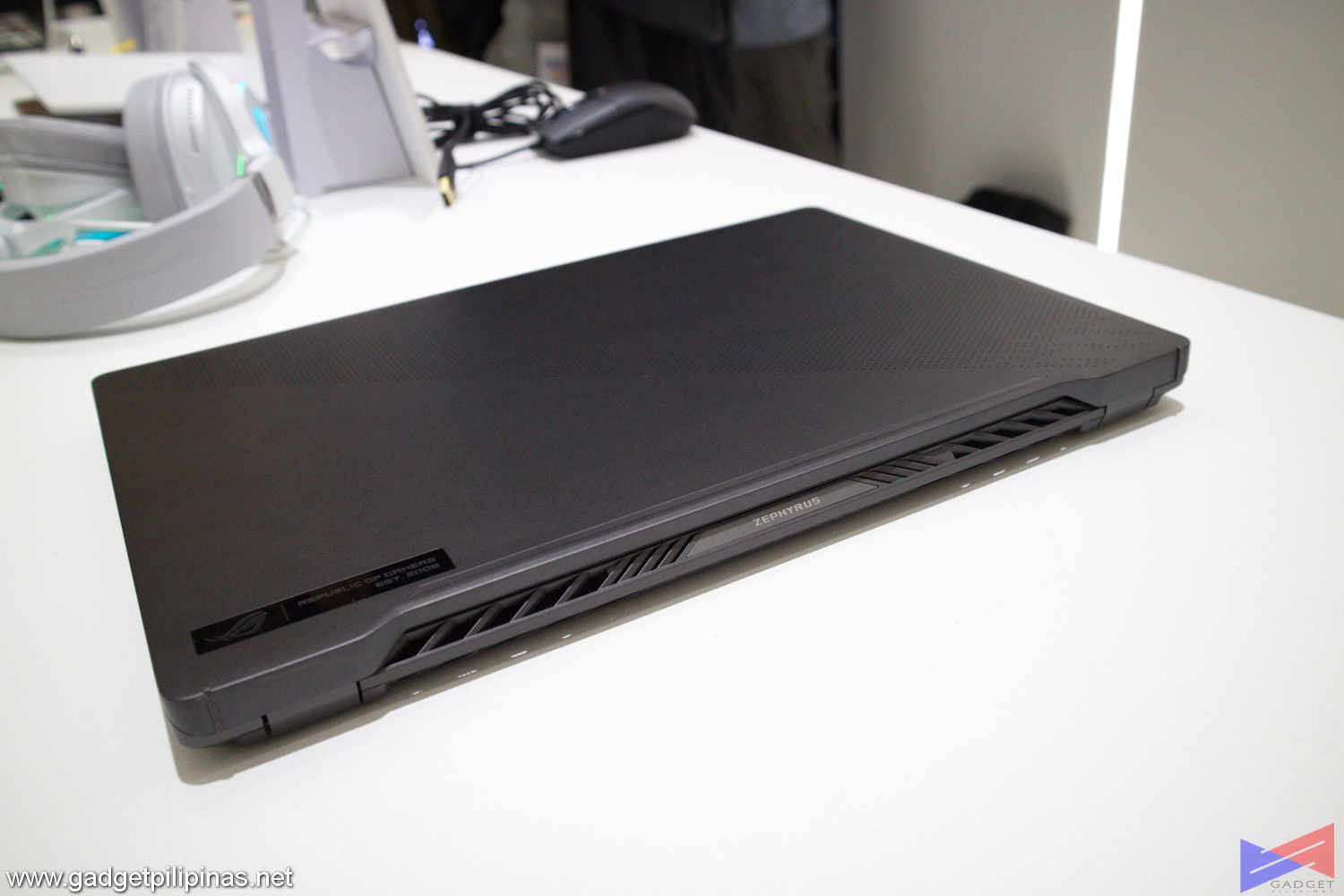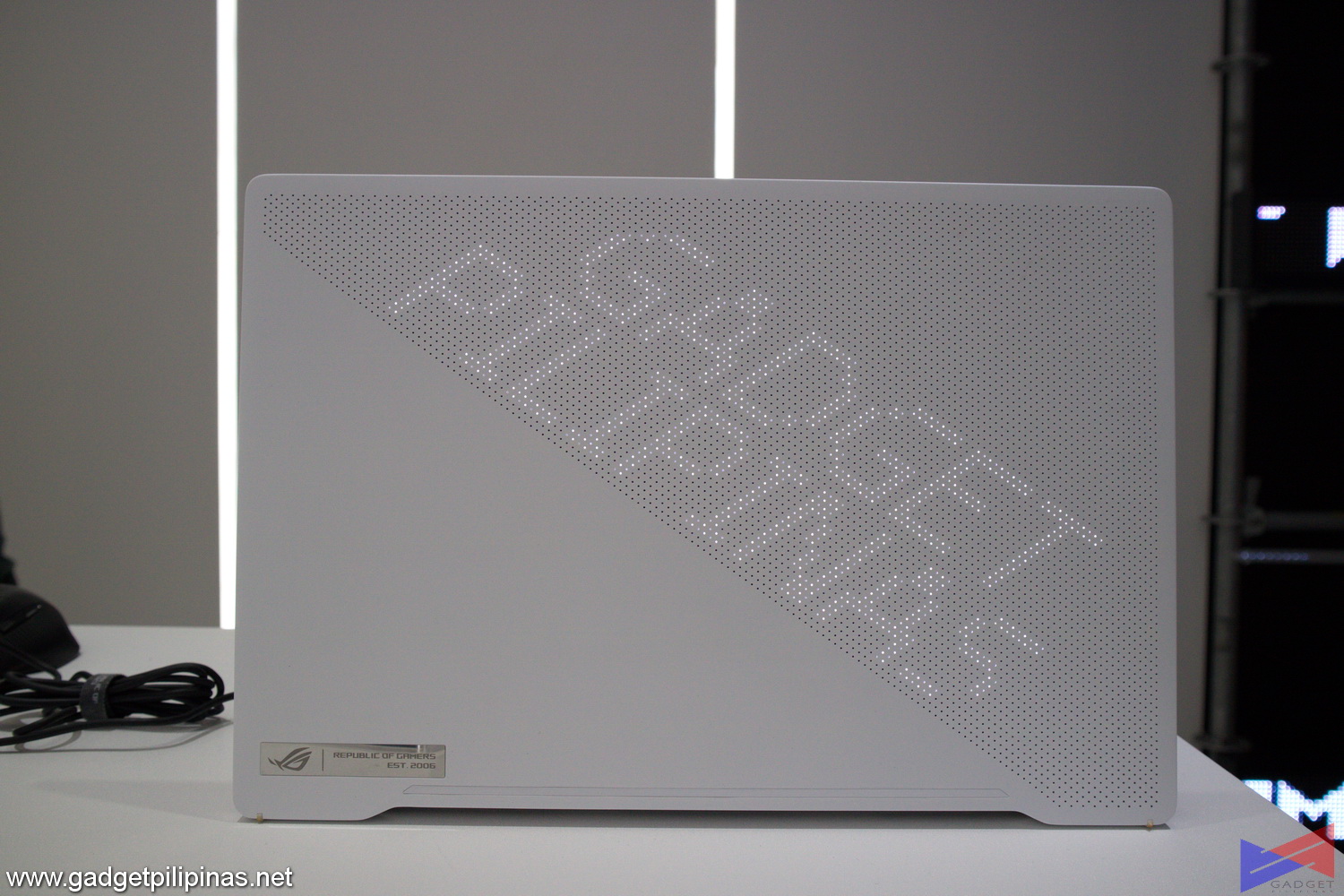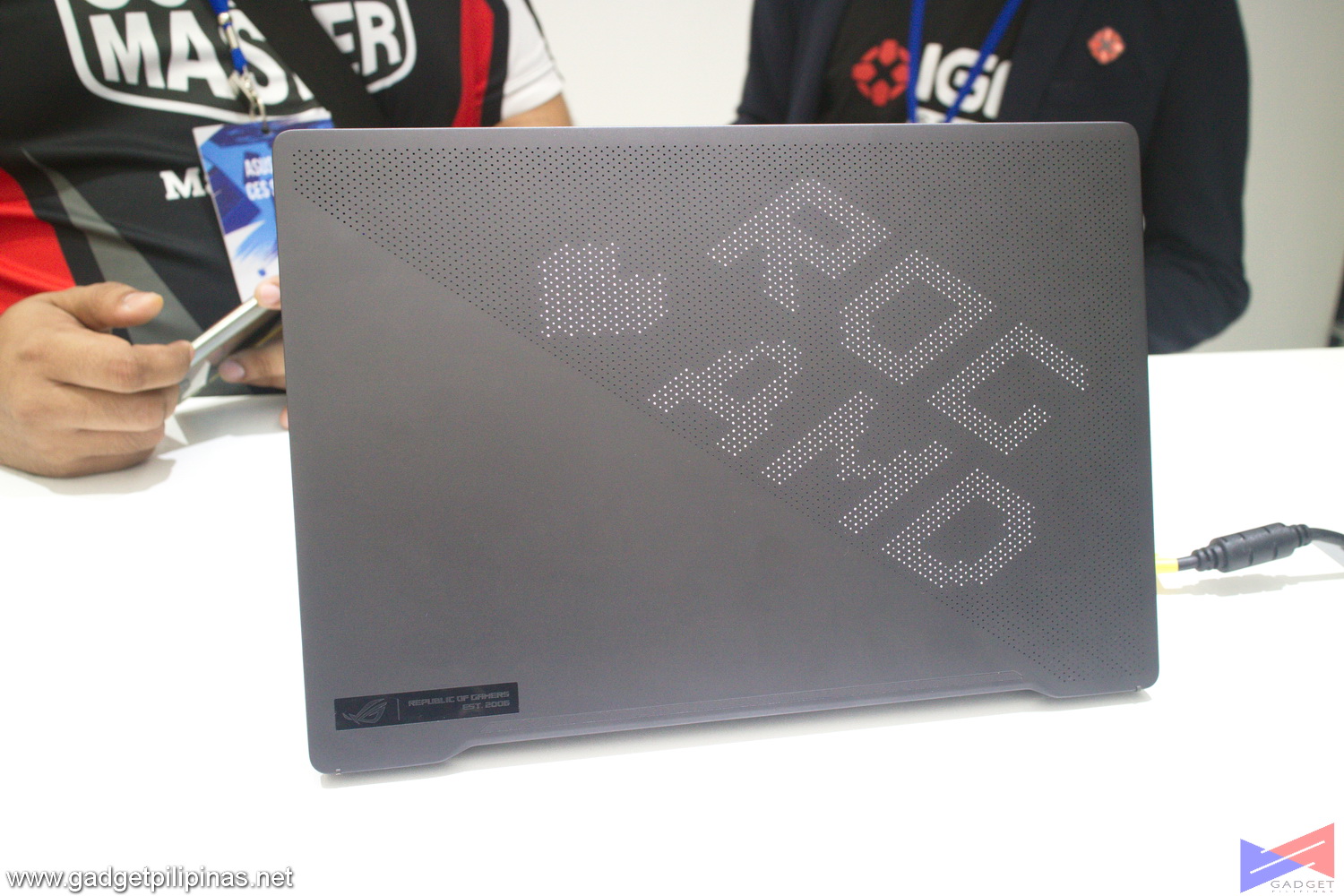ASUS is no stranger when it comes to implementing daring product features whether it is for the sake of performance, aesthetics or just because they can. A prime example of ASUS’ capability in doing such is the ROG Zephyrus. The ROG Zephyrus is probably the thing that comes to mind when you hear “thin and light” gaming laptops. As we hit the limitations of Moore’s law, the race for having the thinnest powerful gaming laptop has come to a halt until Asus went for a different approach with its latest Zephyrus model, the ROG Zephyrus G14 G401.
SPECIFICATIONS
- Processor: AMD Ryzen 4800HS
- Memory: Up to 32GB 3200MHz SDRAM
- Graphics: Nvidia GeForce RTX 2060 | GTX 1660 Ti
- Storage: 512GB / 1TB M.2 NVMe SSD
- Screen: 14″ 1080p 120Hz Pantone Validated Adaptive Sync Panel | 14″ 1080p 60Hz Pantone Validated Panel | 14″ 1440p 60Hz Pantone Validated Adaptive Sync Panel
- I/O Ports: 1x USB 3.2 Gen 2 Type-C w/ DP 1.4 and PD, 1x USB 3.22 Gen 2 Type-C, 2x USB 3.2 Gen 1 Type-A, 1x HDMI 2.0b, 1x 3.5mm combo jack, 1x Kensington lock
- Dimensions: 32.4cm x 22.2cm x 1.79cm
DESIGN
 The new shell of the G14 infuses both design cues from the Intel-based Zephyrus laptops and the first AMD powered Zephyrus laptop, the Zephyrus G GA502DU. It retains the signature boxy design albeit it has less sharp edges.
The new shell of the G14 infuses both design cues from the Intel-based Zephyrus laptops and the first AMD powered Zephyrus laptop, the Zephyrus G GA502DU. It retains the signature boxy design albeit it has less sharp edges.
- ROG Zephyrus G14 GA401 001
- ROG Zephyrus G14 GA401 001
- ROG Zephyrus G14 GA401 014
- ROG Zephyrus G14 GA401 014
ASUS latest’ thin and light gaming machine comes in either metallic Eclipse Gray or pearlescent Moonlight White. We’ve previously seen white limited editions of the Zephyrus and it’s about time for Asus to include a sleek white variant on launch day.
Display
 ASUS decided to tone down the Zephyrus G14’s display to 120Hz or 60Hz instead of a 240Hz display found on the previous Zephyrus M. The ROG Zephyrus 14 GA401 runs in either 1080p or 1440p resolution with both panels sporting a 100% sRGB Pantone validated color gamut and Adaptive-Sync technology.
ASUS decided to tone down the Zephyrus G14’s display to 120Hz or 60Hz instead of a 240Hz display found on the previous Zephyrus M. The ROG Zephyrus 14 GA401 runs in either 1080p or 1440p resolution with both panels sporting a 100% sRGB Pantone validated color gamut and Adaptive-Sync technology.
The Zephyrus G14’s keyboard uses the same keyboard found on the previous Zephyrus with the removal of the navigation keys to account for the smaller form factor. The removal of said keys allows ROG to retain the ideal key size for typing and gaming.
- ROG Zephyrus G14 GA401 070
- ROG Zephyrus G14 GA401 070
- ROG Zephyrus G14 GA401 069
- ROG Zephyrus G14 GA401 069
ASUS equipped the Zephyrus G14 with an ergo-lift hinge instead of the signature Active Aerodynamic System. According to ASUS, users doubted the reliability of the previous Zephyrus that sported an Active Aerodynamic System because of its moving mechanism. The choice to go for the ergo lift hinge, popularized by the Zenbook line, is to ensure the customers’ peace of mind.
- ROG Zephyrus G14 GA401 053
- ROG Zephyrus G14 GA401 053
- ROG Zephyrus G14 GA401 056
- ROG Zephyrus G14 GA401 056
The 14-inch form factor of the Zephyrus G14 limits the gaming laptop’s port selection. There’s only 2x USB-A, 2x USB-C, 1x 3.5mm combo jack, 1x HDMI and a barrel plug. That’s one less USB-A port and an ethernet port compared to the ROG Zephyrus GX502.
AniMe Matrix
- ROG Zephyrus G14 GA401 028
- ROG Zephyrus G14 GA401 028
- ROG Zephyrus G14 GA401 027
- ROG Zephyrus G14 GA401 027
The most eye-catching detail about the Zephyrus G14 is undoubtedly its mini-LED covered lid dubbed the AniMe Matrix. We’re finally starting to veer away from the RGB trend thanks to this unique implementation from ASUS ROG.
 There are 1,215 mini-LEDs on the Zephyrus G14 that are customizable to reflect your style and personality. According to ROG, users will be able to enter texts, images, and even GIFs that will appear on the AniMe Matrix display.
There are 1,215 mini-LEDs on the Zephyrus G14 that are customizable to reflect your style and personality. According to ROG, users will be able to enter texts, images, and even GIFs that will appear on the AniMe Matrix display.
FINAL THOUGHTS
 The ROG Zephyrus line is the manifestation of ASUS’s attempts in engineering such a product. This move marks the Zephyrus G14 as the trendsetter for implementing a mini-LED / LED panel on laptops instead of going for the traditional RGB approach. Moreover, we are also expecting the next iteration of the ROG Zephyrus to feature RGB in the AniMe Matrix concept. The ROG Zephyrus G14 is without a doubt one of the products to look forward to for 2020.
The ROG Zephyrus line is the manifestation of ASUS’s attempts in engineering such a product. This move marks the Zephyrus G14 as the trendsetter for implementing a mini-LED / LED panel on laptops instead of going for the traditional RGB approach. Moreover, we are also expecting the next iteration of the ROG Zephyrus to feature RGB in the AniMe Matrix concept. The ROG Zephyrus G14 is without a doubt one of the products to look forward to for 2020.
We were not allowed to test out any games nor benchmarks during our time with the Zephyrus G14. AMD’s 7-nanometer Ryzen 7 4800HS is definitely a star attraction aside from the AniMe Matrix design. According to ASUS, the G14 will be an AMD(CPU) only exclusive. We have to see actual benchmarks and numbers to conclude if the decision to lock-out the Zephyrus G14 as an AMD is worth it for both ASUS and its consumers.
PRICING AND AVAILABILITY
We are expecting the Zephyrus G14 to be available in the Philippines around April 2020 or Q2 2020. Pricing and final PH configurations are yet to be announced. It will surely be an expensive product due to the 1,215 mini-LEDs and AMD 7-nanometer CPU.
Read our review of the ROG Zephyrus G14 here.
Grant is a Financial Management graduate from UST. His passion for gadgets and tech crossed him over in the industry where he could apply his knowledge as an enthusiast and in-depth analytic skills as a Finance Major. His passion allows him to earn at the same time help Gadget Pilipinas' readers in making smart, value-based decisions and purchases with his reviews and guides.







